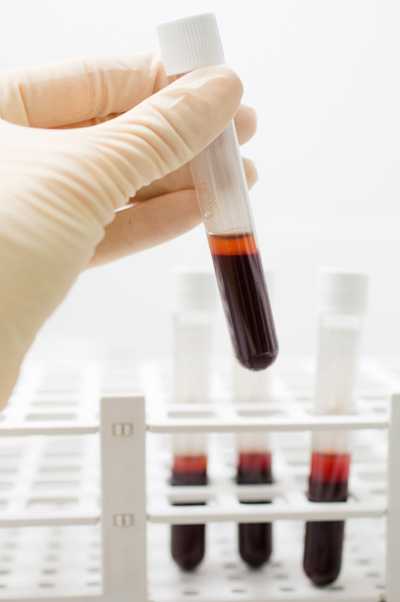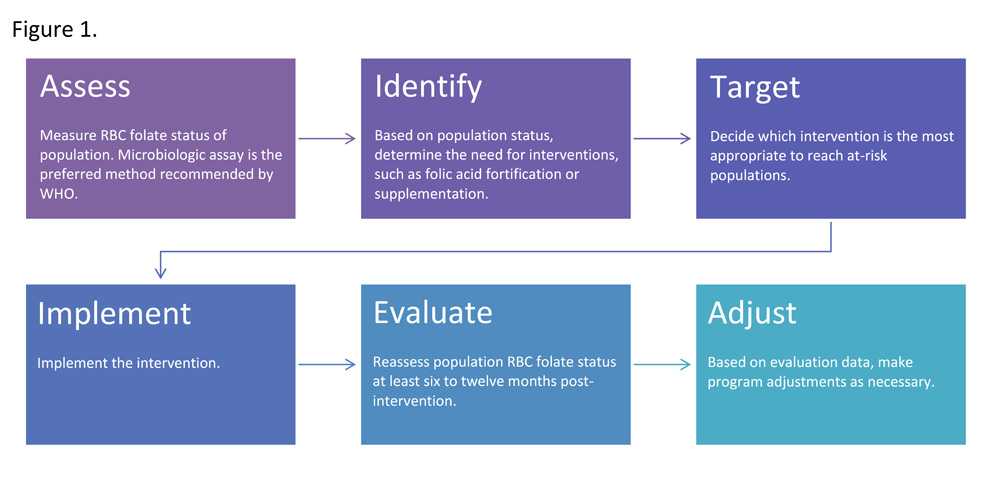WHO Guideline At-A-Glance

Optimal Blood Folate Concentrations for the Prevention of Neural Tube Defects
In April 2015, the World Health Organization (WHO) released the Guideline on Optimal Serum and Red Blood Cell Folate Concentrations in Women of Reproductive Age for Prevention of Neural Tube Defects. The purpose of the guideline is to define the level of red blood cell folate concentrations in a population that is sufficient for the prevention of neural tube defects.
Why neural tube defects?
Neural tube defects, such as spina bifida and anencephaly, are serious birth defects of the brain and spine. They are common, severe, and a costly global public health challenge. We know that many are preventable with the daily use of folic acid among women of reproductive age before and during early pregnancy.
What are folate and folic acid?
Folate is a B vitamin that comes in many different forms. Folic acid is the synthetic (man-made) form of the B vitamin that is used in fortification and vitamin supplements. Our bodies use folate to make new cells.
Why blood folate concentrations?
Blood folate concentration is the amount of folate measured in the blood. Blood folate concentrations (specifically, red blood cell folate concentrations) are known to predict the risk of neural tube defects in a population. Consuming folic acid and natural food folate increases blood folate concentrations.
Why is this work important?
About 300,000 neural tube defects occur worldwide each year; however, the true count is not currently known due to a lack of birth defects surveillance (monitoring) programs in many countries. The guideline provides countries with a tool to assess neural tube defects risk at a population level and to inform ways to prevent neural tube defects. Although birth defects surveillance continues to be critical to monitoring the occurrence of many types of birth defects, data on blood folate concentrations can fill the information gap while birth defects surveillance systems are under development, or complement the data from existing systems.
What are the WHO recommendations?
The WHO recommendations are outlined below. The Guideline on Optimal Serum and Red Blood Cell Folate Concentrations in Women of Reproductive Age for Prevention of Neural Tube Defects (NTDs) can be read in its entirety here.
- “At the population level, red blood cell folate concentrations should be above 400 ng/mL (906 nmol/L) in women of reproductive age, to achieve the greatest reduction of NTDs (strong recommendation, low quality evidence).
- The above red blood cell folate threshold can be used as an indicator of folate insufficiency in women of reproductive age (strong recommendation, low quality evidence). Because low folate concentrations cannot explain all cases of NTDs, this threshold cannot predict the individual risk of having a NTD-affected pregnancy and thus it is only useful at population level.
- No serum folate threshold is recommended for prevention of NTDs in women of reproductive age at population level (strong recommendation, low quality evidence). Countries interested in using this indicator may consider first establishing the relationship between both serum and red blood cell folate and use the threshold value for red blood cell folate to establish the corresponding threshold in serum.
- Microbiological assay is recommended as the most reliable choice to obtain comparable results for red blood cell folate across countries (strong recommendation, moderate quality evidence).”
The WHO guideline development group defines a strong recommendation as the benefits of following the recommendation outweigh the risk, and policymakers can adapt the recommendation as policy in most settings. The quality of the evidence was determined to be low according to of the number and type of studies available; this result was based on using the Grading of Recommendations Assessment, Development and Evaluation (GRADE) methodology. Additional details on the determination of the strength of the recommendation and quality of evidence are available in the WHO guideline.
What does it look like to adopt and implement the guideline?
Figure 1 outlines the activities that a country may undertake when implementing the WHO guideline. It is important to note that implementing the guideline does not necessarily require following the exact order of the activities listed. For example, countries considering implementing folic acid fortification policies could continue with the intervention without waiting to assess red blood cell (RBC) folate concentrations, as the public health benefit of folic acid fortification is clearly established. In this situation, a country might choose to measure RBC folate status after fortification to assess the proportion of the population meeting the WHO recommended cut-offs for optimal folate and to identify vulnerable groups within a population still at increased risk for neural tube defects.

What are the benefits of adopting and implementing the guideline?
If implemented fully, the guideline can:
- Provide policy makers with an additional method to determine the need for, and quantify the success of, programs designed to increase folic acid intake for the prevention of neural tube defects
- Help identify vulnerable groups within a population who have an increased risk for neural tube defects, allowing for targeted public health interventions
I work in a country that is interested in adopting the guideline. Can CDC help us get started?
Yes, CDC is available to provide technical assistance to countries adopting the guideline. Please contact us at BirthDefectsCOUNT@cdc.gov for more information.
Why is CDC involved?
CDC’s global initiative, Birth Defects COUNT (Countries and Organizations United for Neural Tube Defects Prevention) aims to reduce death and lifelong disability resulting from folate-sensitive neural tube defects. Expanding neural tube defects prevention globally is an important effort for CDC.
I have a question about folic acid and/or folate.
A lot of new information on folic acid and folate is available, and many people are likely to have questions about it. Please visit our FAQs to see if we already have an answer to your question. If you don’t find an answer to your question, you may contact CDC using this form.
I want to know more about the science behind the WHO recommendation.
Learn more about recent CDC publications supporting the WHO recommendation here.
- Page last reviewed: April 26, 2017
- Page last updated: April 22, 2015
- Content source:


 ShareCompartir
ShareCompartir